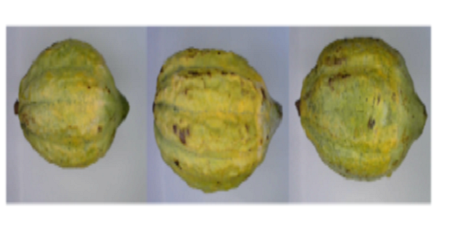


Indian Journal of Science and Technology
Year: 2022, Volume: 15, Issue: 11, Pages: 495-504
Original Article
Noribelle G Baculio1*, Jocelyn B Barbosa1
1University of Science and Technology of Southern Philippines, 9000, Philippines
*Corresponding Author
Email: [email protected]
Received Date:27 October 2021, Accepted Date:16 February 2022, Published Date:25 March 2022
Objectives: Cacao is considered the “food of the gods” and is one of the leading crops of the tropical world. The differentiated use for both food and nonfood of cacao is the reason why it has been gaining recognition around the world. Despite this, cacao production is said to be declining for a variety of reasons. One of these is the possible contamination among the harvested pods due to the manual way of performing classification and segregation of cacao pods during the harvest period. Traditional approach or the manual way of classifying whether the pod is healthy or not is very subjective, which may give erroneous results, and mixing of healthy and unhealthy pods may lead to contamination once they are transported and stored. Hence, we develop a study to make an objective approach that performs cacao pods classification by discriminating healthy cacao pods from unhealthy ones using Artificial Neural Network (ANN). Methods: This study presents a Cacao Pod Classification System that will automatically classify cacao pods (i.e. healthy or not healthy) during the harvest period. We leverage imaging technology and machine learning techniques to create a classifier that performs binomial classification. Color Histogram (CH) and Local Binary Pattern (LBP) features were used as input to the Artificial Neural Network (ANN) classifier. Findings: Experiments reveal that the approach successfully extracts features from the captured images of cacao pods and provides efficient results in terms of the four performance measures (i.e. accuracy, precision, recall, and f1-score) giving an accuracy rate of 98.3% in particular, which is superior among other classifiers tested such as the Support Vector Machine (SVM) and Logistic Regression (LR). Novelty: Artificial Neural Network classifier was found to be superior from other classifiers tested in classifying healthy and unhealthy cacao pods along with color histogram and local binary pattern as features used in the study. Application: The pilot test of the application was performed in a 5-hectare privately owned cacao farm situated at Poblacion, Initao, Misamis Oriental, Philippines.
Keywords: Image Processing; artificial neural network; cacao pod; classification; feature extraction; segmentation
© 2022 Baculio & Barbosa. This is an open-access article distributed under the terms of the Creative Commons Attribution License, which permits unrestricted use, distribution, and reproduction in any medium, provided the original author and source are credited.
Published By Indian Society for Education and Environment (iSee)
Subscribe now for latest articles and news.